18th March 2016 - Thames Valley
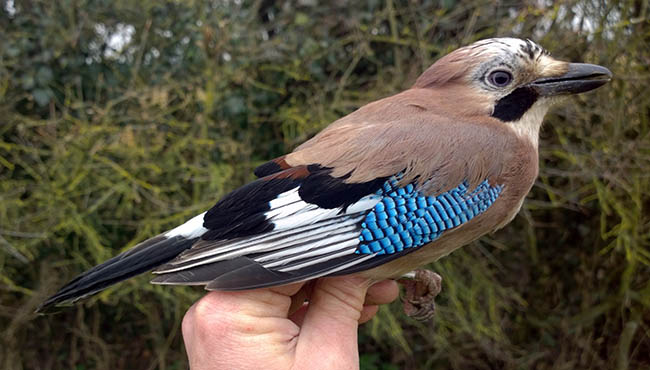
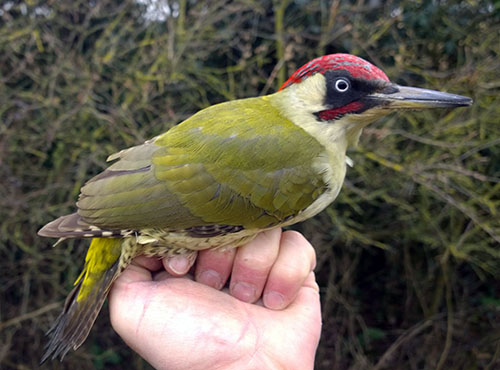


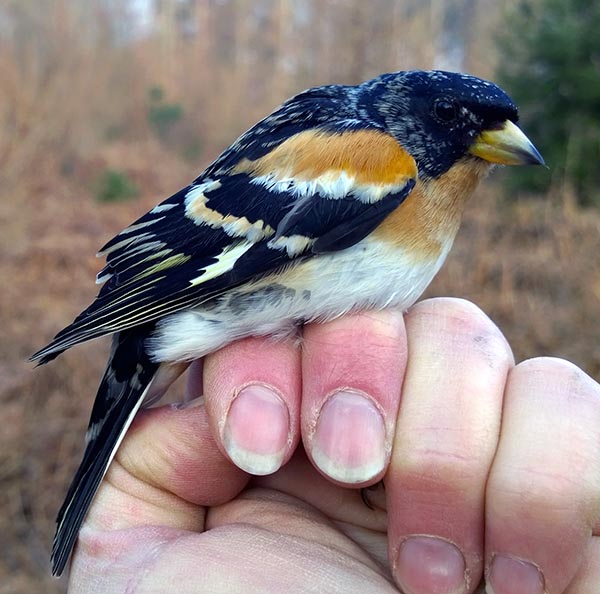
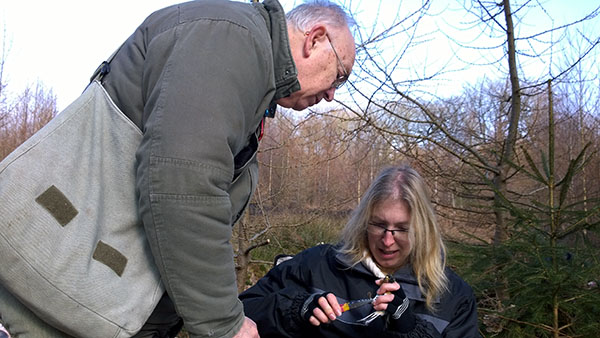
Today was a targeted effort for Tree Sparrows at a private garden on the downs that is one of the largest Tree Sparrow colonies in Wiltshire. The main purpose of the session was to fit Tree Sparrows with PIT tags so that we can record them at the nest during the summer without having to retrap them. I purposefully left this session late into the winter to try to only catch birds that will breed at the site.
We are starting to catch up on all the missed opportunities that the atrocious weather earlier in the winter caused and so today we managed to ring the third of our trio of sites in the Thames Valley. I have slightly adjusted the net set at this site and it worked incredibly well. I was joined by Paul W and Noah and Noahs mum drew the short straw of scribing though she is a very good scribe. A good scribe is absolute gold dust as it frees me up to train the team and also to ring when required.
This was only a small net set but we closed two nets at about 9am due to the wind but the other nets were very sheltered and with the number of birds it proved to be a good decision.
The morning was dominated by a very impressive run of Yellowhammers and also a good number of Reed Buntings. There were Redwings and Fieldfares around but we chose not to try for them because we were busy enough anyway. 189 new and 28 retraps made for one of the best days of the winter but our team is so proficient that it felt busy without being rushed.
We caught a Reed Bunting that was ringed by John Wells in the Cotswold Water Park 9km away and we caught a Yellowhammer that we ringed at one of the other sites 3km away. The others had to leave at 11:15 and would you believe it, as soon as they left I caught a lovely male Brambling. MP, PW, NW
Yellowhammer 75 (9), Reed Bunting 26 (4), Brambling 1, Chaffinch 20 (1), Greenfinch 8, Bullfinch 3 (2), Linnet 1, Tree Sparrow 1, Blackbird 4 (2), Song Thrush 2, Robin 5 (3), Dunnock 15 (6), Wren 4, Great Tit 10, Blue Tit 11 (1), Long Tailed Tit 3
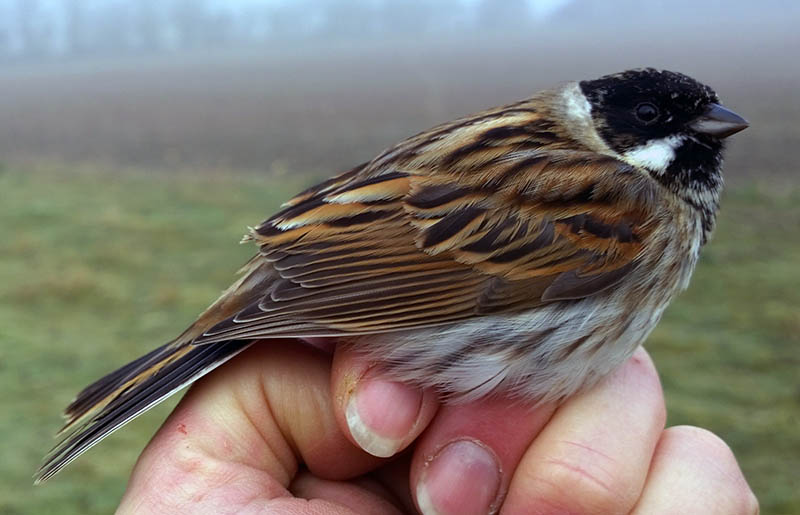
I was joined by Biff for a session at a fantastic farmland site where the farmer feeds the Tree Sparrows and other farmland birds. The site is a single hedgerow with an adjacent conservation crop designed especially for Tree Sparrows. This site has a magnificent flock of over 500 Yellowhammers and 150 Tree Sparrows and so our hopes were high for a good number of Tree Sparrow recoveries.
A little try at catching Little Owl failed despite two being present but in fairness we have ringed one in each of the last two years and it may be that both birds of the pair are ringed. The next two birds that we saw were a pair of Grey Partridge but they flew away from the nets.
The nets were graced by a steady stream of Chaffinches, Yellowhammers and a surprising number of Reed Buntings but we were particularly unsuccessful at catching the Tree Sparrows which is a shame. Most people wouldn't normally associate Reed Buntings with high downland but not only did we ring four but the retraps included three from last winter and one from two years ago but we don't know if they are resident or winter visitors showing site fidelity.
A brief sighting of a Merlin was nice but it didn't go near the nets.
Towards the end of the session we caught a Yellowhammer that bore a ring with a sequence that isn't ours. Our previous studies of Yellowhammers have shown that they do not move more than 4.5km so we were a bit suspicious of the potential origin of this bird. We have subsequently found out that this bird was originally ringed on 29km away on the Berkshire Downs in May 2014. This is our first ever Yellowhammer control and is a completely atypical movement but it is a great addition to the local gene pool. MP, BF
Yellowhammer 35 (7), Chaffinch 15 (2), Reed Bunting 4 (4), Tree Sparrow 3, Linnet 2 (1), Blue Tit 1, Dunnock 1, Wren 1 (1), Starling 1, Blackbird 0 (1)
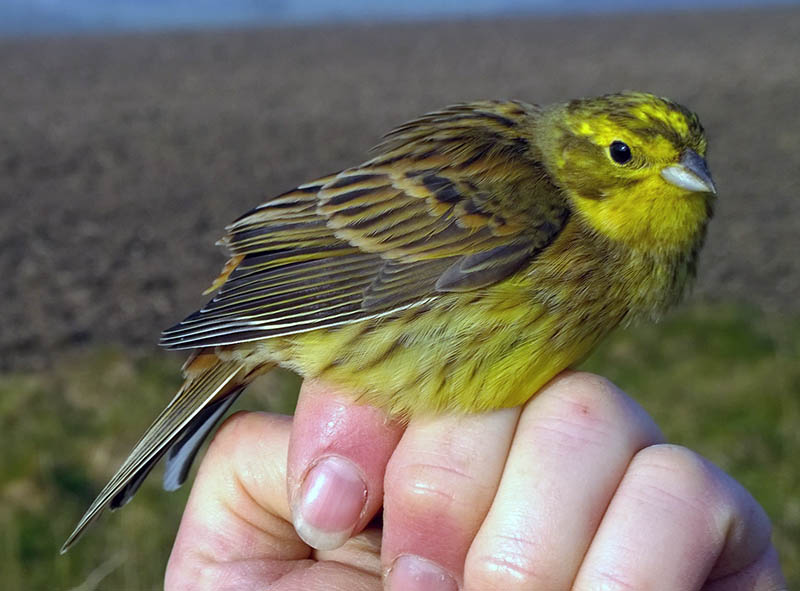
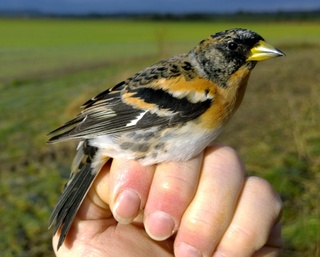
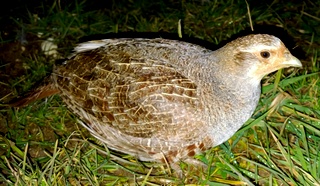
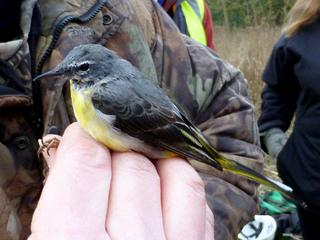
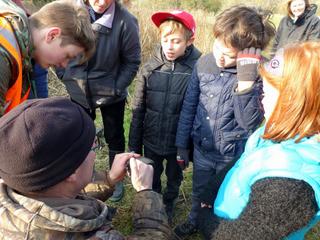
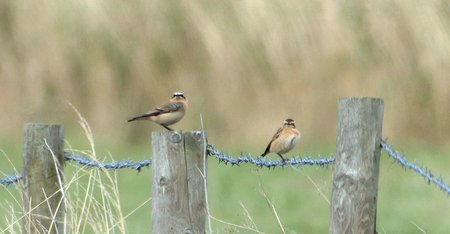
2 Yellow-legged Gull, 9 Herring Gull, 97 Lesser Black-backed Gull - Stoford - Bob Blamey
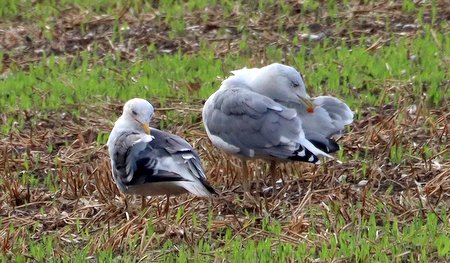
Redstart, Yellow Wagtail, 6 Stonechat - Wylye - John Fishwick
Hobby, Whinchat, 200 Lesser Black-backed Gull - Stoford - Bob Blamey
4 Whinchat, 6 Stonech...
26 Yellow Wagtail, 2 Redstart, 16 Whinchat, 14 Stonechat, 15 Swallow - SPTA east - Brian Heath
Hobby, 4 Kingfisher, 2 Gadwall, 3 Gr...